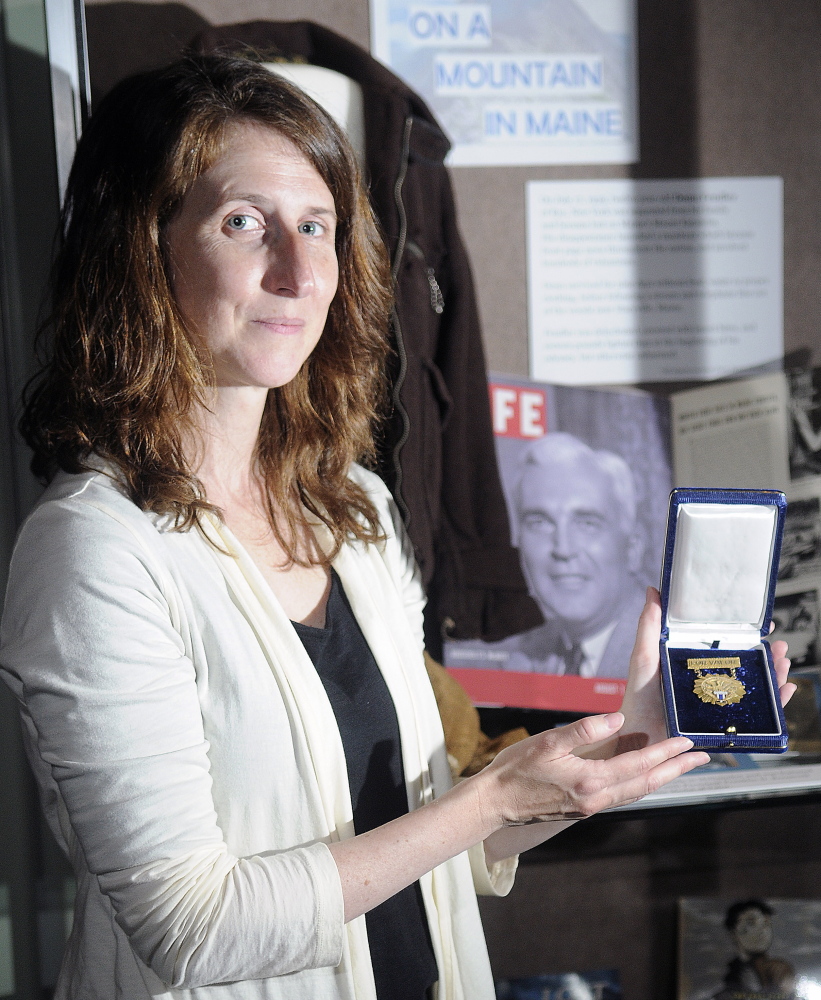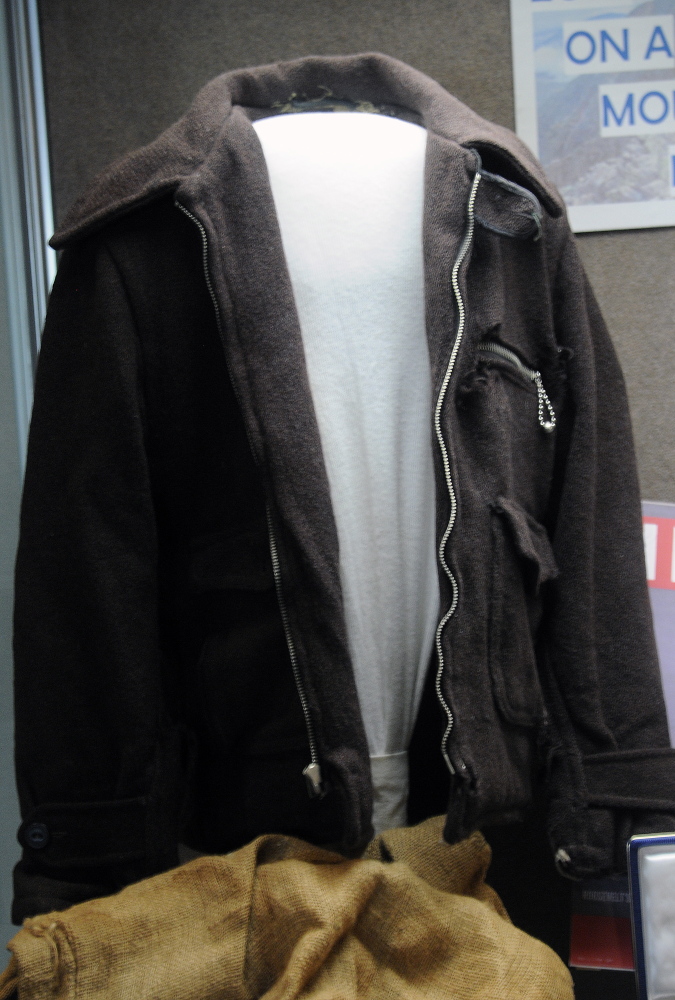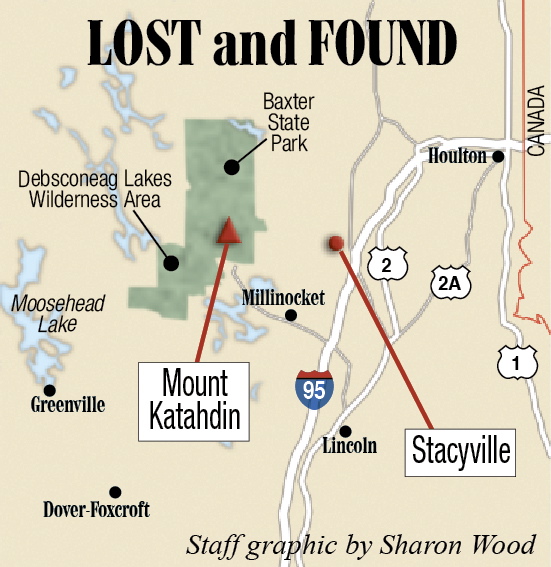AUGUSTA — There are a few things a person might notice about the jacket Donn Fendler was wearing when he got lost on Mount Katahdin in 1939.
First of all, it’s brown, not blue — unlike the one in the illustration of a boy who is not Fendler on the cover of “Lost on a Mountain in Maine,” his account of his nine-day ordeal.
Then there are the holes torn in the left sleeve, near the wrist, and at both ends of the zippered breast pocket. Perhaps the jacket ripped in those places when Fendler ran into a thorny vine on the fourth day after he got lost.
What strikes Maine State Museum curator Kate McBrien is the jacket’s size. It’s small. After all, Fendler was only 12 years old when he wandered off a trail as a storm set in near the summit of Katahdin.
“To see the jacket, it reminds you how young he was,” McBrien said. “And no one found him. He found his way out.”
Fendler’s jacket and other memorabilia — including a newspaper announcing he’d been found alive and a letter from former Gov. Percival Baxter calling Fendler “a very brave and plucky boy” — were on display at the museum through the end of July in 2014 as part of a special exhibit to commemorate the 75th anniversary of his survival.
Fendler, then 87, still came to Maine every summer and made an appearance at the Maine State Museum to talk about his experiences and sign copies of “Lost on a Mountain in Maine.”
Many Maine schools still assign the book for their students to read, and Fendler visited schools and libraries every year when he returned from his part-time home in Tennessee to his camp on Sebasticook Lake in Newport.
“Maine people can relate to it,” Fendler said during a phone interview in 2014 from his Newport camp. “They’re self-reliant, hardy people, basically outdoors people. They know what the Maine woods are like, so reading the book or the newspaper articles, they knew exactly what I was going through. The book means an awful lot to them, apparently.”
When McBrien got in touch with Fendler, he was glad to lend some items to the museum.
Some things have been lost, such as the burlap sack that Fendler believed helped save his life because it protected him from biting insects. A similar sack takes its place in the display case.
One of the most important items is there, though: the Medal of Valor he received from President Franklin D. Roosevelt.
“How many people get a medal from the president of the United States, especially young people?” Fendler said. “It’s one of those things you treasure for all your life.”
Whether he deserved the honors and recognition he received for surviving in the wilderness, Fendler doesn’t know. Going off by himself in the fog was a dumb thing to do, he said. He attributes his survival to his faith in God, his Boy Scout training and a will to live.
A screen next to the display case shows a looping video transferred from 8 mm film shot by one of Fendler’s uncles at the camp of Nelson and Lena McMoarn, who cared for Fendler and called for help after he found his way to their property near Stacyville, emaciated and exhausted. He had walked at least 48 miles and lost 16 pounds, surviving on strawberries.
The video shows Lena McMoarn cutting a pair of her husband’s pants to fit Fendler and the boy being placed in a canoe with a doctor to be taken downstream to Grindstone, where he was reunited with his mother before being taken to a hospital in Bangor.
In addition to “Lost on a Mountain in Maine,” Fendler’s story has been told in a 2011 graphic novel, “Lost Trail,” and a feature film about it is in the works. Though it’s familiar to many Mainers, McBrien said, visitors to the museum may see or feel something new when seeing Fendler’s jacket in person.
“When you see the real thing, it brings it to life in a way that you couldn’t get in a book,” McBrien said. “It makes a personal connection.”
Send questions/comments to the editors.





Comments are no longer available on this story